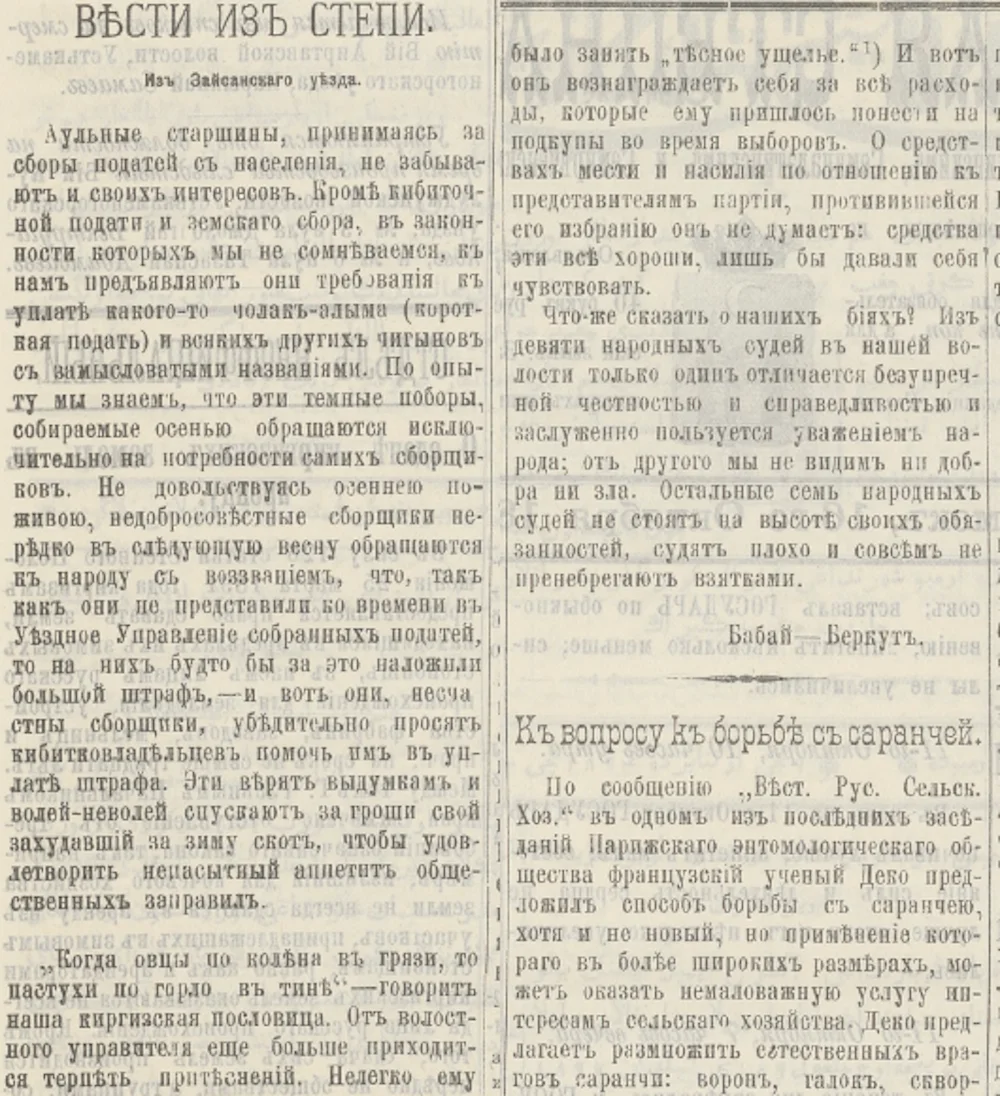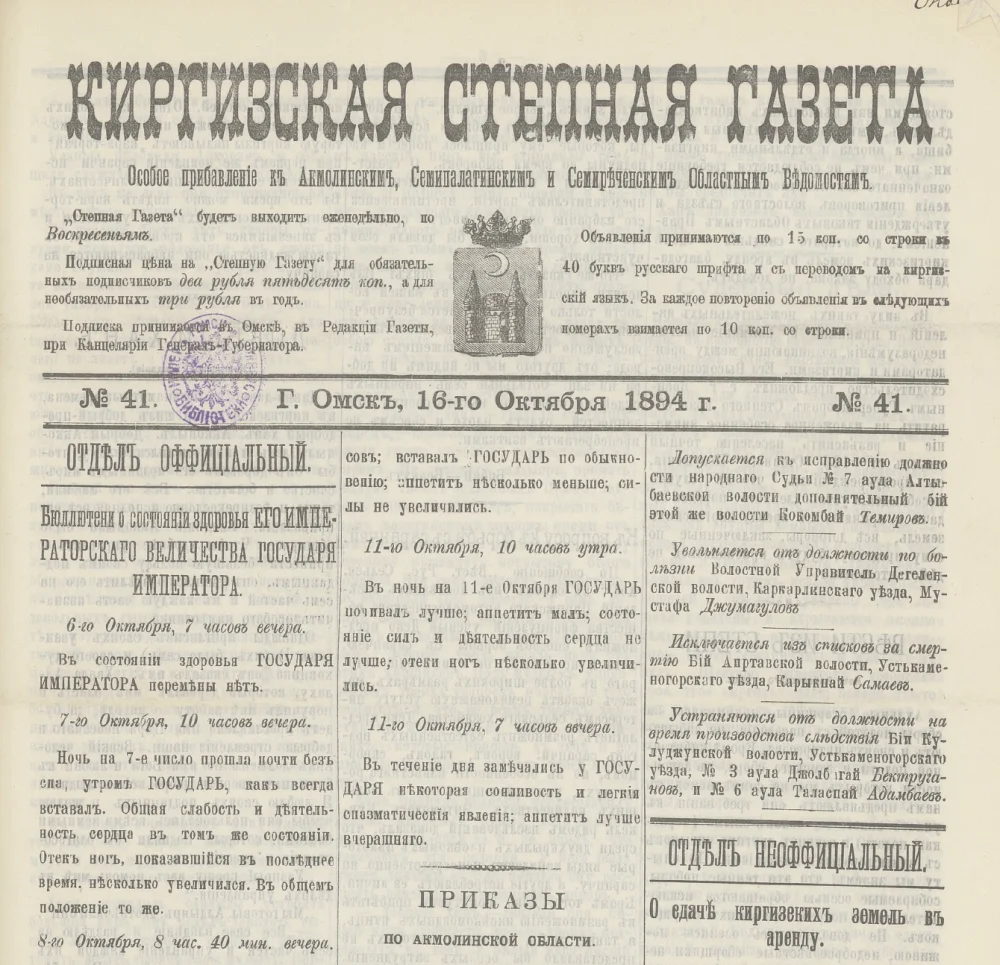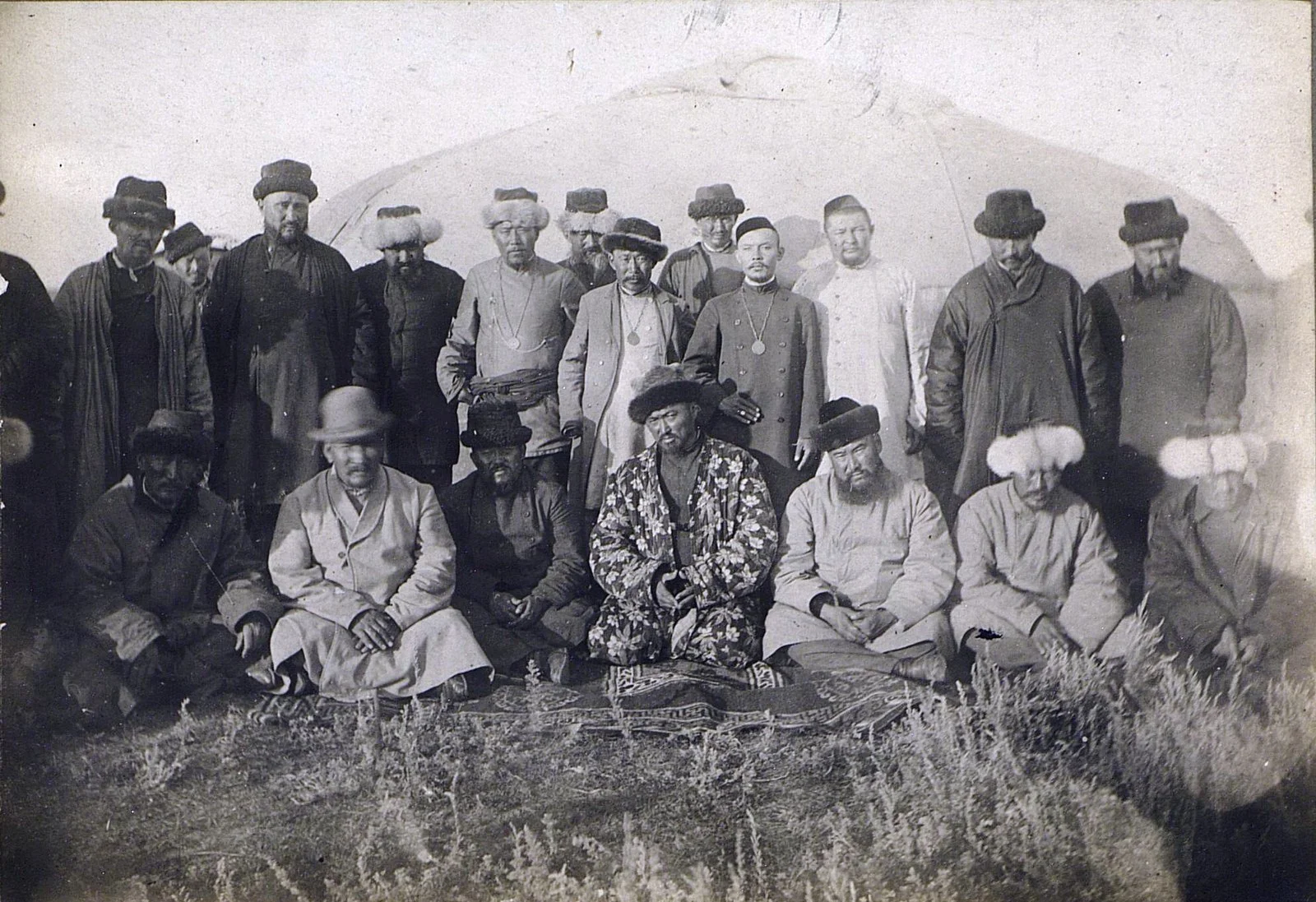As the nineteenth century gave way to the twentieth, a great wave of awakening surged through Kazakh intellectuals, sparking a passionate quest for knowledge. This outpouring of intellectual zeal led to an explosion of new magazines and newspapers being published in Kazakh, heralding the dawn of a new era in sharing culture. However, what these intellectuals wrote went beyond only spreading knowledge. Soon, a variety of publications emerged, covering topics like business, society, politics, art, and humor. Qalam invites you to explore snippets from Kazakh publishing culture and history, offering a glimpse into the important issues of the past.
After the annexation of the Kazakh steppe, the Russian authorities grappled with the task of establishing effective local administration in the newly acquired regions. The Russian authorities designated the aul as the smallest administrative division in the region. An aul typically encompassed 100-200 yurts, while a volost (district) contained 1,000-2,000 yurts. The leadership of the auls was assigned to elders, who were chosen by local residents during aul gatherings and subsequently approved by Russian officials. These elders were tasked with collecting taxes and policing functions. Since the position of aul elder was sometimes contested by representatives of different clans, the victory of one often meant a deterioration in the situation for representatives of other clans in the aul. As a result, electoral struggles and inter-clan competition were often reflected in the pages of newspapers, where aul elders were frequently accused of various abuses, most commonly corruption. Here is one such letter that appeared in the "Kyrgyz Steppe Newspaper" (Issue #41, 1894) from a Kazakh named Babay-Berkut:
News from the Steppe.
From the Zaysan District.
When collecting taxes from the population, Aul elders do not ignore their own interests. In addition to the yurt tax (kibitochnaya podat') and zemstvo levy, the legitimacy of which we do not doubt, they initially demand payment of some cholak-alym (short tax) and various other chygyn (expenses) with intricate names. From experience, we know that these shadowy exactions, collected in autumn, are used exclusively for the needs of the collectors themselves. Not content with their autumn gains, these unscrupulous collectors often approach the people the following spring with an appeal, claiming that because they did not submit the collected taxes to the District Administration on time, they were supposedly fined a significant amount for this—so they, the unfortunate collectors, earnestly ask yurt owners to help them pay the fine. The people believe these fabrications and, willingly or unwillingly, sell off their livestock, thin and weakened over the winter, for a pittance to satisfy the insatiable appetite of the community leaders.

Babai-Berkut’s letter in in the "Kyrgyz Steppe Newspaper"/from open access
"When sheep are knee-deep in mud, the shepherds are neck-deep in mire," says our Kyrgyz proverb. We endure even more oppression from the volost administrator. It wasn't easy for him to occupy the "narrow gorge."i
And so, he compensates himself for all the expenses he had to incur on bribes during the elections. He has no qualms about using any means of revenge and violence against those who opposed his election; any means are good as long as they make their presence felt.
And what can be said about our biys (judges)? Out of the nine people's judges in our district, only one stands out for his impeccable honesty and fairness, and he rightfully enjoys the respect of the people. From another, we see neither good nor evil. The remaining seven people's judges do not live up to their duties, judge poorly, and lack the slightest aversion to accepting bribes.
Babay-Berkut

The first page of the 41st issue of the Kyrgyz Steppe Newspaper/ from open access
The Kirgizskaia Stepnaia Gazeta (In Kazakh, Dala Uälaiatynyñ Gazetі) was a special supplement to the Akmolinsk (1888–1905), Semipalatinsk (1894–1905), and Semirechensk (1894–1901) regional gazettes. It was published in Omsk in Russian with additional content in Kazakh.




